I’m going to start the post by saying that if there’s any video of mine you watch this year, I’d definitely go with this one. It’s largely unedited chunks of what it’s actually like in a pro tour team car, complete with how troubleshooting actually works with a mechanic hanging out the side of the car as the car and cyclist fly down the road doing an awkward dance together.
Meanwhile, this post serves to provide a bit more detail behind some of what you see in that video, along with plenty of little snippets from the nearly four hours of discussion and driving along this day’s stage. But again, first, here’s that video:

As you see, tons of interesting tidbits in there, so let’s dive right into it!
Behind the Scenes:
If there was any stage to be in a team car on, it’s likely Stage 5 of the Tour Down Under. The 150KM stage takes part across two looped sections, one of which includes the famed Willunga Hill. That hill is about as close as you’re going to get to French Alps like crowds down here in Australia. And as you’ll see, the Australians did not disappoint. But that was clear from my drive out to the start of Stage 5. Along the entire 50-60KM drive from Adelaide, it was like watching an ant colony of cyclists migrate to McLaren Vale. Thousands upon thousands of cyclists, dutifully riding south to the stage start and nearby course areas. They’d eventually have to ride back home too later that day, after many hours baking in the hot Australian sun.
My noble steed for the day would be the FDJ Team Car. Team FDJ is a French pro cycling team, ironically enough based in Paris as well. Only appropriate we’d both travel 16,000 kilometers from Paris to ride in a car together around the bush.
Even more ironic is that Team Manager Jussi Veikkanen (and the car driver) is actually a DCR reader, swinging in for tech reviews. We chatted at length about power meters during the drive. Team FDJ has actually been one of the original teams that Shimano brought on a long time ago to start testing their Shimano power meter that more recently started shipping (I’ve got one with me as well). Though, you won’t see the power meters on the spare bikes atop the team car roof racks at the TDU. In fact, you rarely do on most teams. This is largely because the logistics of bike swaps rarely lend themselves well to also changing power meters mid-race.
I was beyond surprised and excited to learn I’d be in the front seat for this day, riding shotgun. Note that shotgun in the Tour Down Under is on the left side. Speaking of which, the race organizer actually provides all race vehicles for the teams. This helps to minimize the cost of travel down to Australia, since bringing 1-2 massive team RV’s/busses, plus 3-5 team vehicles wouldn’t be practical. Especially for only a 6-day stage race.
Still, there’s much gear to be brought down. Team FDJ packed 27 pieces of luggage, not including anybody’s suitcases. This contained 12 bikes on the main flight, plus two more bikes that went a week or so ahead with riders that went early.
With Singapore Airlines being a major sponsor of the race, they provided business class seats for all riders, though team staff were hanging out in economy for the 20 hours of flying (not including layovers) that it takes to get from Europe to Adelaide via Singapore. For Team FDJ, they took the flight combination that got them a 10-hour daytime layover in Singapore, which they largely spent at a hotel resting up.
Within a minute or so of the starting gun going off, we were cruising down the road behind the riders. At first within the race neutral zone it’s at a pretty slow pace. Which isn’t to say there wasn’t action around us. Almost immediately after the start line we passed a Team Education First rider who’s left crank arm had come off his Power2Max crankset. He was attempting to awkwardly limp forward while keeping the right side foot attached to the remainder of the crank arm. The details of the mechanical situation were announced on Race Radio for all team cars to hear, which undoubtedly elicited chuckles across all vehicles given it occurred at walking speeds.
Speaking of radios, Race Radio is the lifeblood of how teams receive instructions from the race and officials. It’s one of two radio systems in the car. In the case of Race Radio, all instructions for this race were given in English first, followed by a woman who translated them into French, then Italian. You can hear this constant stream of updates within the video above.
For example, when a rider needs help from the team car, he actually doesn’t typically contact the team car directly. Instead, he pulls to the back of the peloton nearby the race official (commissaries) on the motos, below in yellow. He then raises signals to the official and relays the nature of his problem. That’s then broadcast to all race vehicles and the appropriate team vehicle will leap foward to the front of the caravan of vehicles to assist.
For example, early on the team had problems with the second of the two radio systems – the one communicating between Team FDJ’s team car and the riders. This is on a separate channel. So the rider dropped back to the team car to troubleshoot. You can watch the full four-minute troubleshooting session within the video above. It’s a fascinating look at how things aren’t always as cut and dried as a flat tire.
In this case, mechanic Chris Fry had to completely swap out the rider’s race radio system…while moving at full speed. That’s complicated because riders do a really good job of having that system be almost invisible under their kits. So Chris had to basically untangle it through his cycling jersey and bib and then re-install a new one.
All to eventually figure out it wasn’t the riders radio at all, but rather the Team Car’s radio that was having electrical issues. It would randomly drop out for long stretches before we realized it. At other times, it smelled like an electrical burning smell was coming from somewhere. We couldn’t ever identify the source of the electrical issue. Though, we all agreed that unless there was smoke and fire to be seen, there was little we could do about it. Plus, a team car on fire would undoubtedly have been the highlight of the TDU that day, had it occurred.
Going back to the mechanic for a moment, Chris Fry is actually a local mechanic. For this race, team’s don’t necessarily bring multiple main European mechanics with them. Team FDJ had one with them, but then hired Chris locally. He normally works at Baum Cycles. Still, he fit right in and was quickly addressing anything that popped up. Which was, unfortunately, a fair bit on this day.
The backseat and trunk are packed with gear, from extra wheels to a gaggle of tools, an entire cooler with just ice in it, along with another cooler with bottles in it. The team brought over 500 bottles with them to the Tour Down Under this year, packing them into bike bags alongside bikes. Like filling a McDonald’s Playpen full of balls. Any spare space got a bottle.
Bottle sponsorships are big business in the pro cycling realm, with Tacx and Elite being the two major providers. In this case, Elite is Team FDJ’s sponsor and thus main provider of bottles. However, you’ll also see the orange bottles, which the Tour Down Under provided, in an attempt to offset some of the bottles the team had to transport to Australia.
To put into context how many bottles a team can go through, on the day prior (Stage 4), where the temperatures soared to 110°F/43°C, the team went through 80 bottles (which are discarded to excited fans throughout the stage). And that was just for 5 riders, since Team FDJ lost two riders earlier in the week. About half those bottles were filled with water, and about half with sports nutrition. The ones with water were largely poured over the riders heads to keep them cool.
When it comes to picking up bottles for the team from the team car, one rider drops back and fills up his jersey with bottles. This includes both the back pockets as well as the front on the inside. He then returns up to the peloton to distribute them.
In addition to the team cars, there’s also Feed Zones, where riders can pick up bags of food and in today’s case, socks (or probably pantyhose) filled with ice. You can see us passing through this area with all of the team staff on the right side holding the leftover bags.
We ended up picking up some of the spare bags from them, just in case the riders changed their mind later.
More importantly though, one bag had three ice creams within it for us.
Jussi noted that most staff tend to come back a bit heavier from the Tour Down Under compared to any other race, since the food is so good, especially the breakfast buffets at the hotel each morning.
For this particular stage, the team wasn’t using their normal iPad based software platform for tracking riders due to connectivity issues at the hotel that morning. Though it wasn’t a super complex stage, and was well-known – so it was less of a concern. Instead, they just used a simple phone app (MotionX) to keep tabs on where they were within the course.
You may be wondering about the order of the team cars. On the first day of a stage race, that’s determined by random order. However, subsequent days are determined by the teams overall place. On this day, the team was in 10th place. You’ll find small white stickers in the lower right corner of the rear windshield that notates where that team car should be.
It was also interesting seeing just how low the TV helicopters got. Certainly I’d seen some of this at the Tour de France, Giro, and elsewhere. But I think the Australian helicopter pilots get a wee bit closer to the ground. Note for context the tree nearby us. In many situations the TV helicopters would be barely more than an adult’s height from the ground (or water as it was in some cases).
As we neared the first of two iterations of Willunga Hill, we turned on the local TV broadcast of the race to keep tabs on the main peloton and where specifically within that group team FDJ riders were.
At the same time, both team manager and mechanic were using a pen to mark off higher placed riders that we passed, to figure out which of the more competitive riders (placed higher in the GC) the team didn’t have to worry about for the stage sprint.
However, once we hit the climb, most of the focus was instead on playing dodge and weave going up the hill. With the peloton fractured, there were plenty of riders off the back on the climb.
In theory riders would be on one side and team cars passed on another, but with it being Australia and switched around from usual, it was a bit more of a free-for-all.
And just for context on how close riders and fans were, note the below photo. One rider in my side mirror, another directly next to me, and fans next to him.
But the fans were awesome. So many fans out there.
For Team FDJ, the Tour Down Under is viewed similar to most teams – an early season race to get the kinks out. And with that tidbit, it’s also an opportunity for the entire team to see how they work together as a cohesive unit. For example, for team managers to get to know newly hired team riders, or vice versa.
And that’s probably one of the most overlooked aspects of the team car. Sure, it’s there to resolve mechanical issues. But as much support as the mechanic provided one of FDJ’s riders that day, the team manager, in turn, was providing reassurance and support. Effectively acting as one to re-instill confidence in the riders when it was low, or to otherwise be that calming voice that all will be OK.
It was clear that Team Manager Jussi Veikkanen was definitely that calming voice. Navigating the fine line between being the rider’s “boss”, while also being their supporting teammate. No doubt his word was the final one, but he also knew which circumstances didn’t need boss-like direction, and which ones simply didn’t matter in the grand scheme of things. Perhaps his more than a decade as a rider himself in the pro peloton made that job easier.
As we finished up the stage the team car went to the parking area to meet the team van. It’s here that support staff had chairs out for the riders and drinks all lined up.
Meanwhile, the mechanic’s job wasn’t quite done. He’d get all the bikes racked up atop the car for the journey back home for the day. Later on that day the main mechanic would take over cleaning and prepping the bikes for the next day.
The entire post-race waiting process only lasted 15-20 minutes, before the team pulled out. It’s part of the carefully choreographed dance to get teams and riders back to their hotels as quickly as possible each day.
A dance that would repeat itself again the next day for the final stage of the Tour Down Under. In the case of Team FDJ, as I write this they’re already aboard a Singapore Airlines flight back to France, along with a number of teams. The life of being part a pro team doesn’t afford too many days at the beach unfortunately.
Final Thoughts:
I was a bit nervous going into the day with the team car. While I’m very familiar with the pro cycling scene, it’s heavily slanted towards the tech side. I can quickly name off anybody at any company in the cycling tech/gadget scene…but the non-tech side of pro cycling? Hardly so.
Thus, the prospect of spending four hours in a small restroom-less car with guys who live and breath the pro cycling scene day in and day out around the world was a bit intimidating. But what I found was that both Jussi and Chris were awesome. They were just as interested in some of the tech aspects of what I do, as I was interested in the random details of what they do. And that’s cool, both are great class acts.
I’m looking forward to catching up with Jussi and the rest of the team when I return back to Europe later this spring, hopefully to talk a bit more talk, and to share a bit more behind the scenes down the road.
Thanks to Team FDJ for finding space for me, and thanks to y’all for reading!
FOUND THIS POST USEFUL? SUPPORT THE SITE!
Hopefully, you found this post useful. The website is really a labor of love, so please consider becoming a DC RAINMAKER Supporter. This gets you an ad-free experience, and access to our (mostly) bi-monthly behind-the-scenes video series of “Shed Talkin’”.
Support DCRainMaker - Shop on Amazon
Otherwise, perhaps consider using the below link if shopping on Amazon. As an Amazon Associate, I earn from qualifying purchases. It doesn’t cost you anything extra, but your purchases help support this website a lot. It could simply be buying toilet paper, or this pizza oven we use and love.

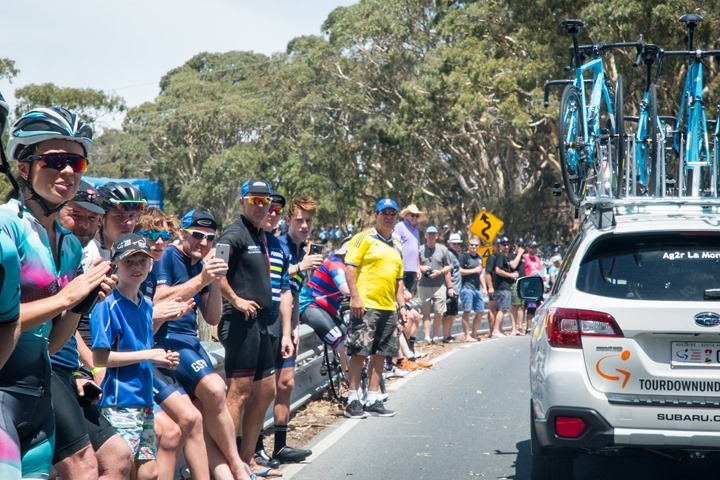
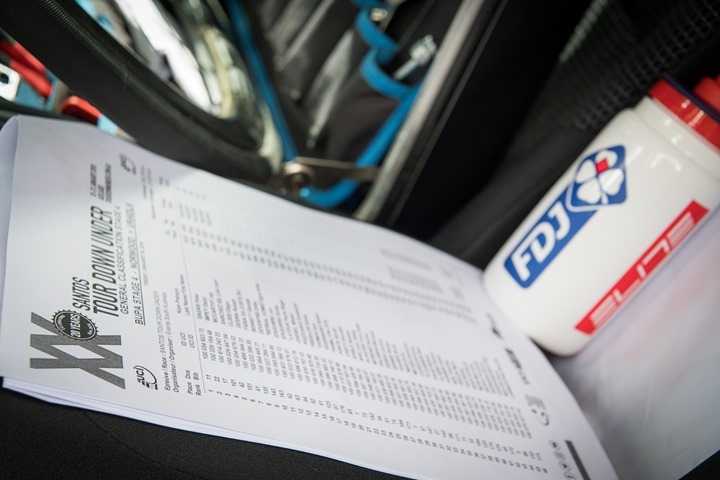
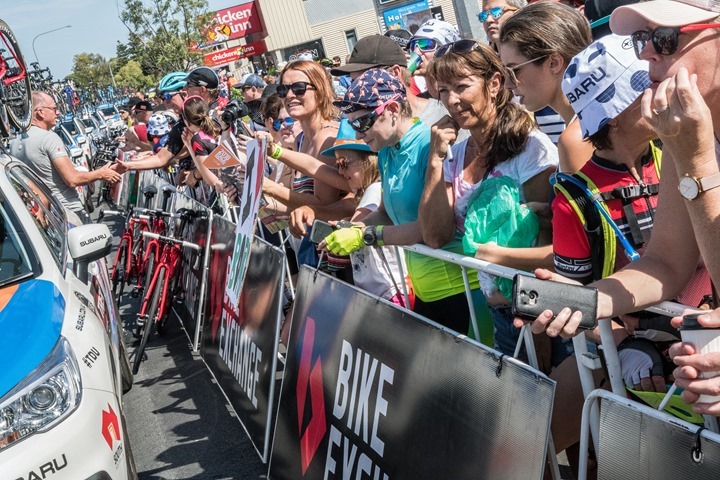
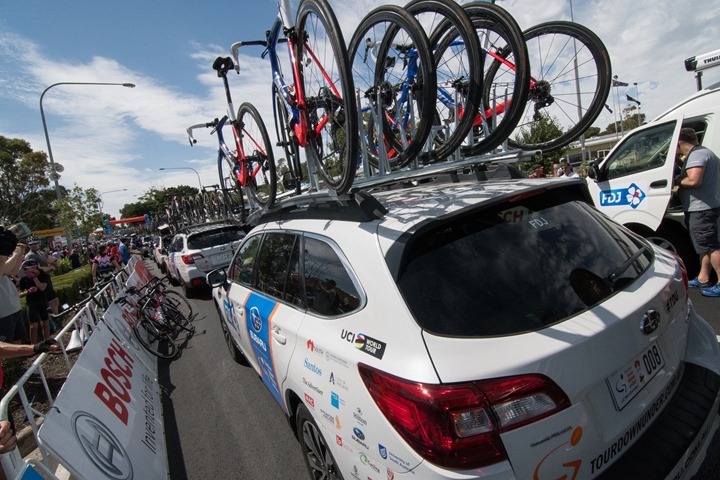
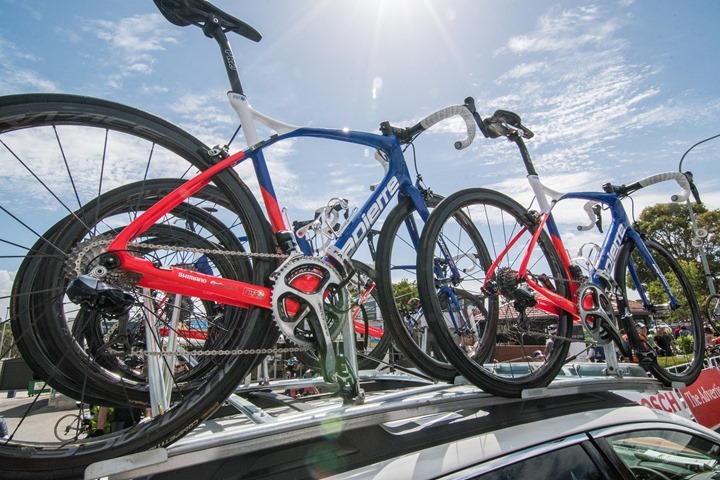
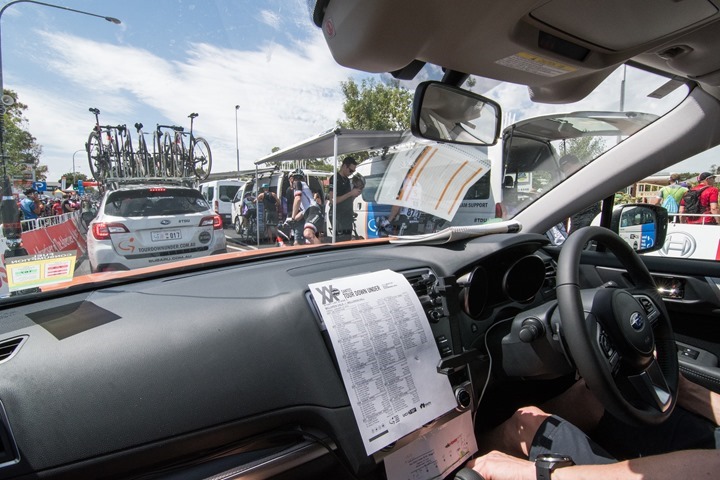
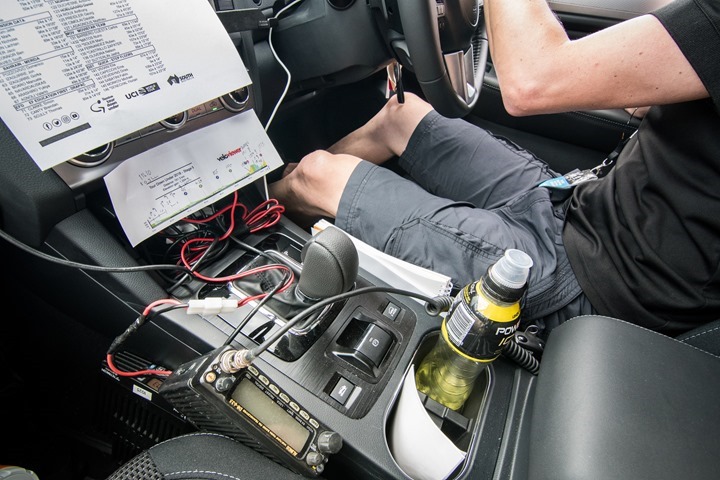
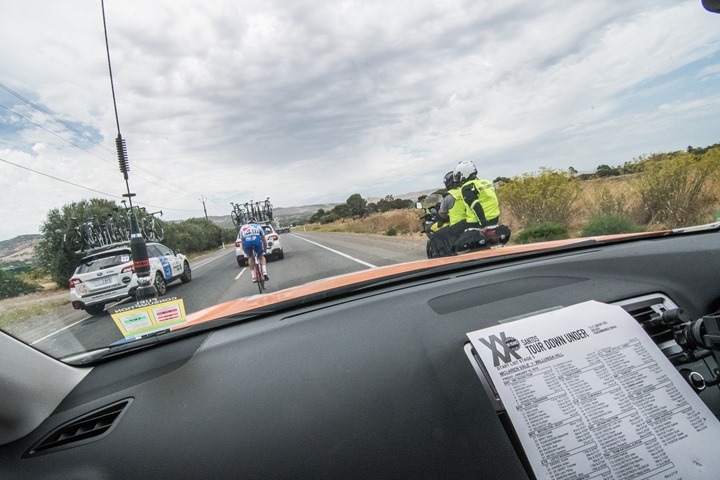
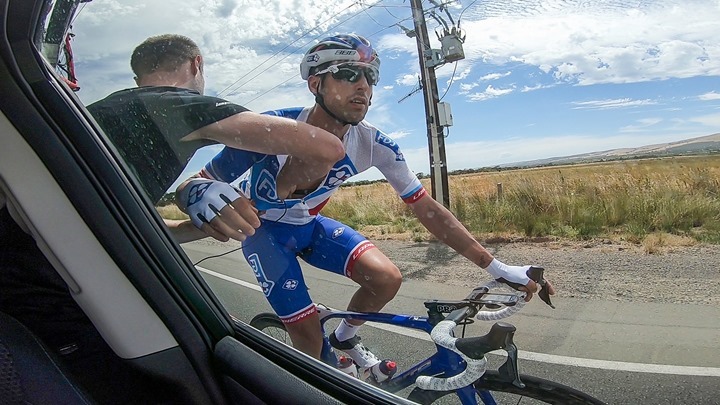


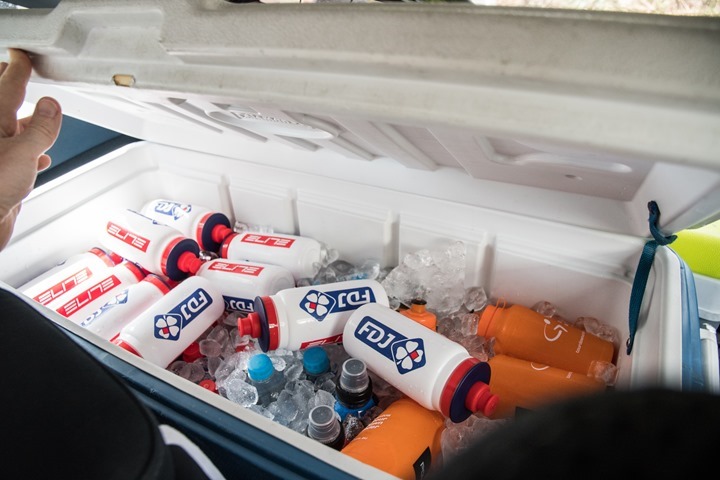
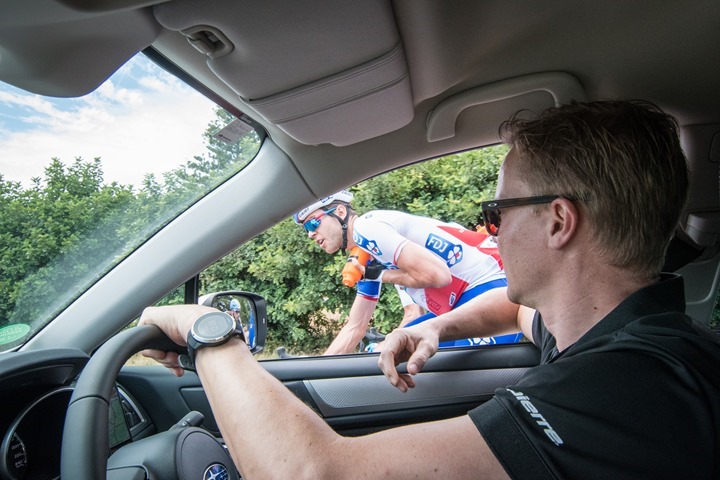

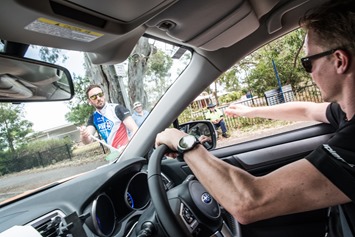
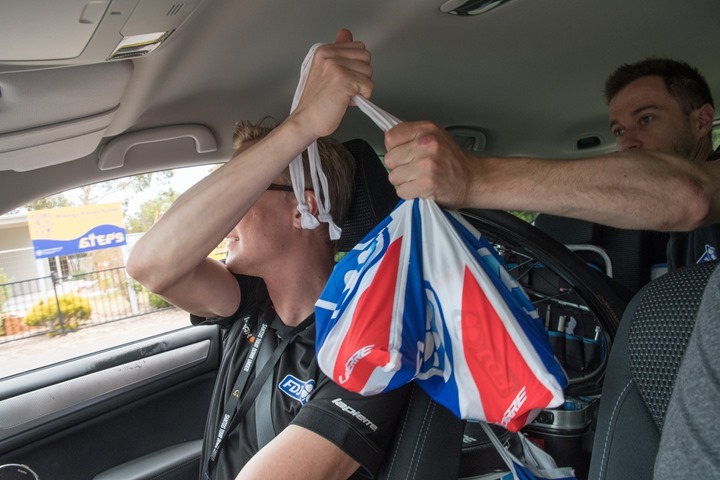
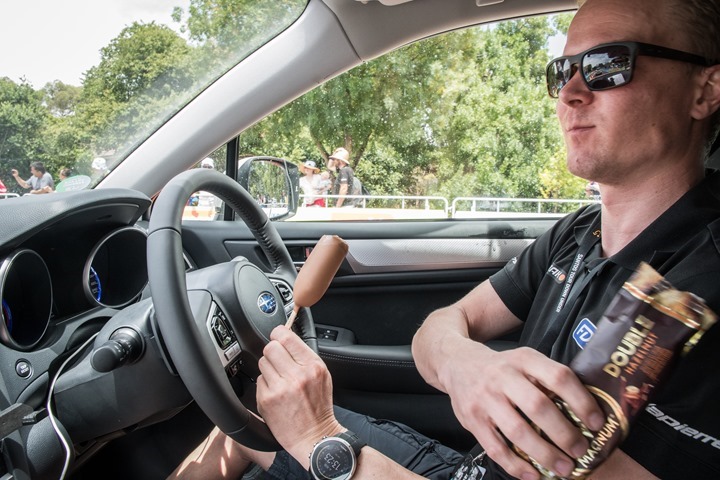
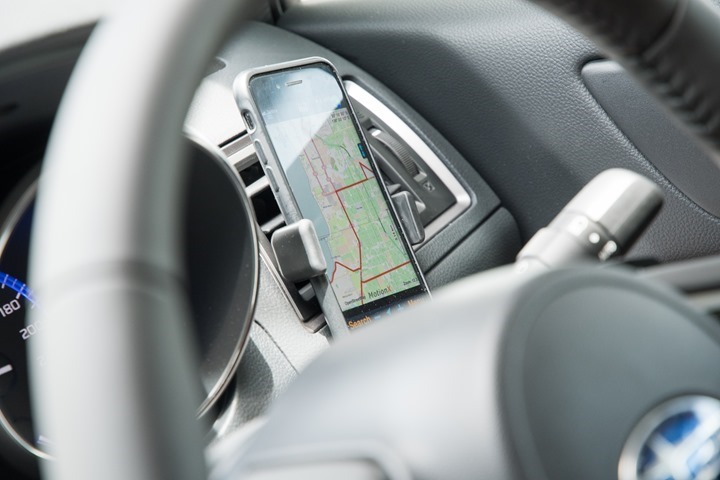
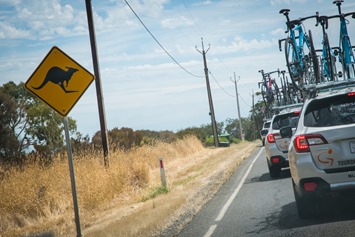
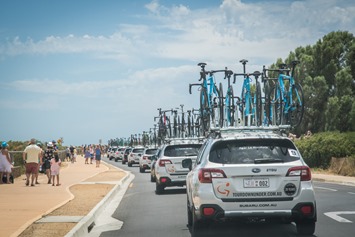

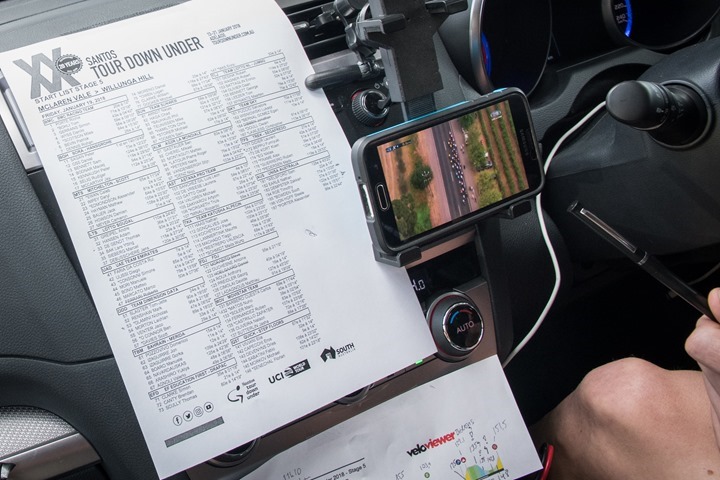
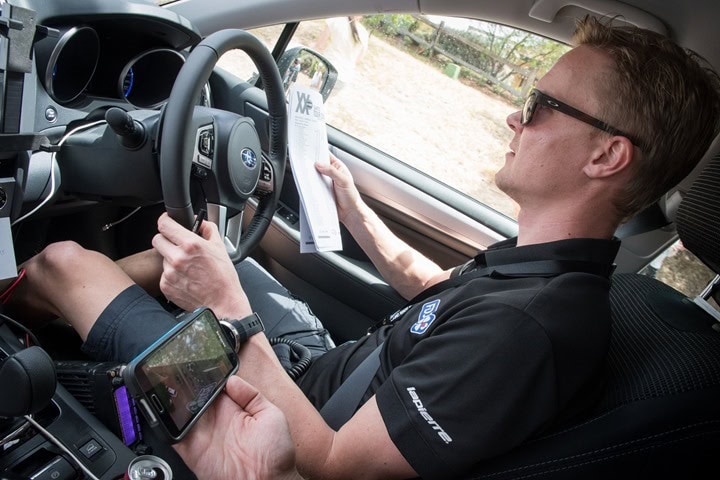
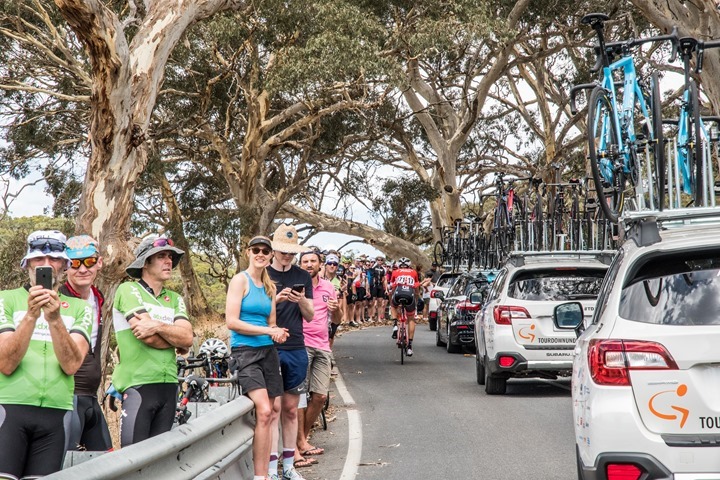
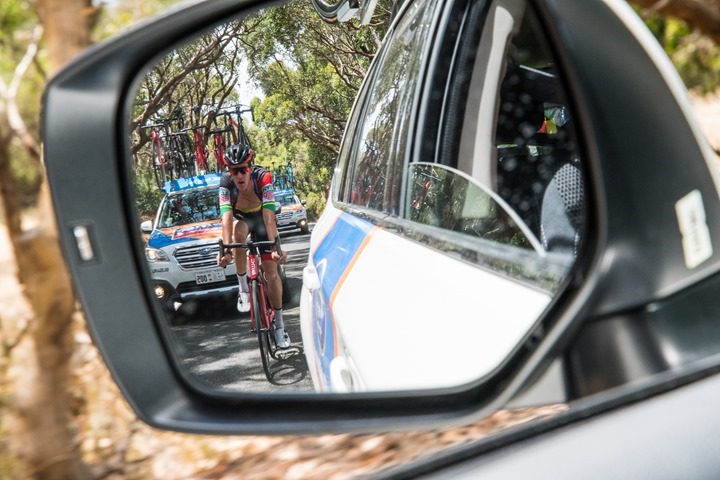
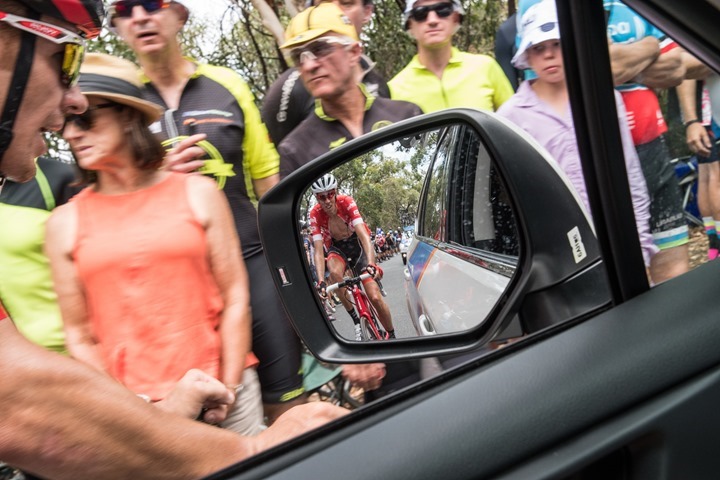

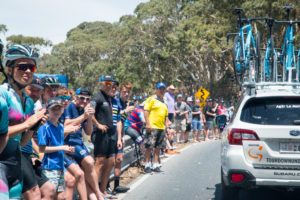
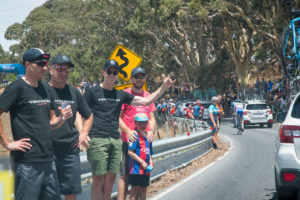
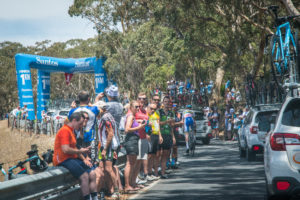
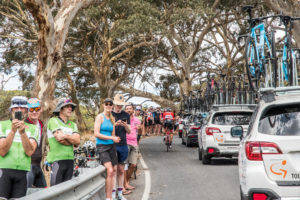
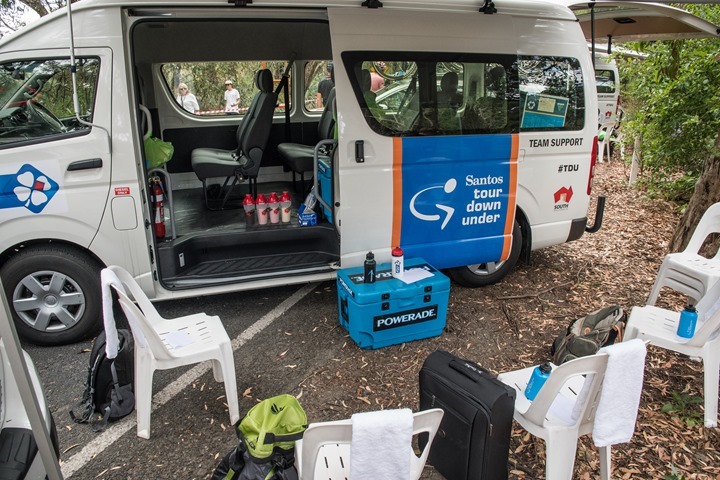
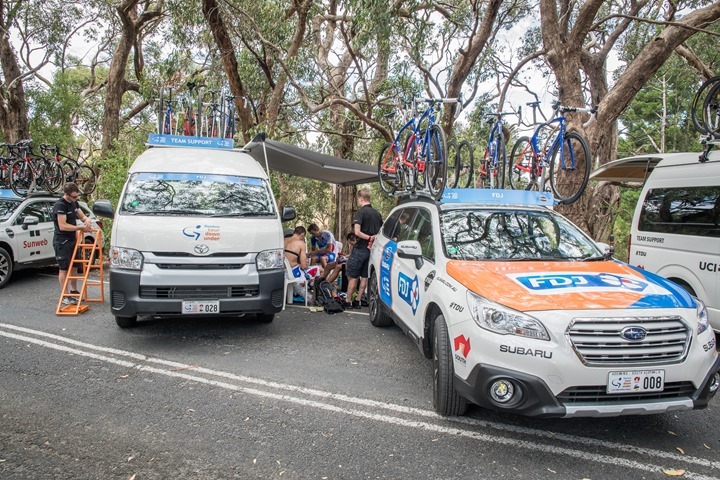
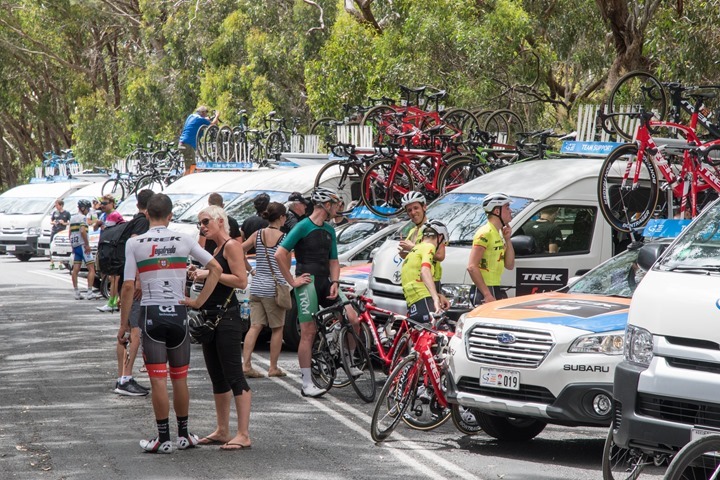
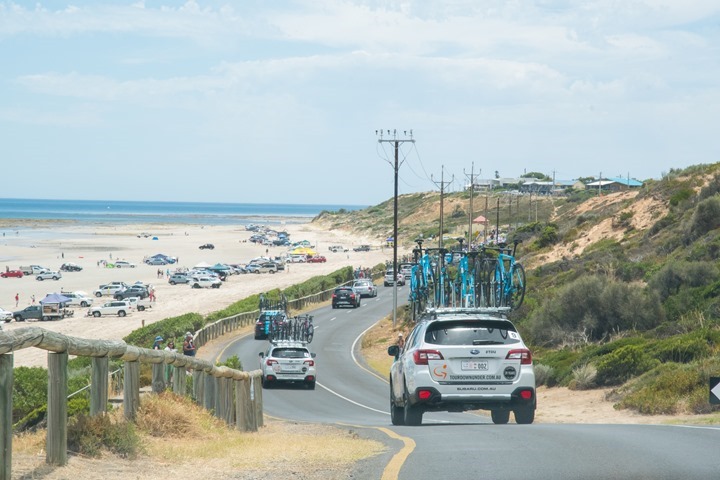





















really awesome blog post, I may just support FDJ now. How did you get a chance to get there, just because they were avid readers of the blog post?
Ray has become an honorary Frenchman!
I had initially wanted to do a piece on Veloviewer and how team cars use it in a stage (something I’d been trying to do since last year actually, but timing was always tough). The folks at Veloviewer were arranging things initially, and then the Elite folks pushed it over the edge and vouched I wasn’t a complete weirdo. :)
Though, given how many cameras I had…they probably still thought I was a weirdo. ;)
Awesome video – super interesting. Thx
I really appreciated the video ride inside the team support car. Very interesting. Brilliant.
Thanks
Great video. It is amazing there aren’t more team car crashes given the extent of the driver distraction.
There are two types of team mechanics: the one who honestly admit he is a DCrainmaker reader/follower and the one who deny it…
Of course, you were talking about power meters…
Lot of people are able to test power meters (like team riders, individuals), but you are comparing them! So that’s why.
Ray, sorry to tell, but you are the Snowden of sport’s tech.
Very cool way to spend a day! Thanks Ray and FDJ for getting this together for our benefit! I was wondering, is the passenger seat usually reserved for a ride-along like a ‘exclusive corporate box-seat’ type of deal, or would they normally have a third team staffer there? Cheers!
Generally speaking it’s for various team guests.
Interesting, to see the fine art of handing off bidons…seems that wrist position is important to ensure correct hand off without expending unnecessary energy.
I’ve had the opportunity to ride in team cars as a photographer during the old Tour De Georgia. It’s quite an experience seeing everything first hand!
Great read – and I’ll watch the video when I get a spare moment later.
Would you ever consider becoming a paid techie consultant for any of these teams ?
A few teams have asked, but I’ve always been hesitant there. Instead, I do provide some of the same in an unpaid manner to a couple teams on and off as questions come up. FDJ isn’t one of them.
One of your best columns ever! Very interesting! Thanks
Great video :).
I also wanted to mention that the video was great, with its POV from inside the car. I would love to see more stuff like this every now and then! Maybe wear a gopro on the chest and do something like “spend a day with a pro rider on a tour.” See the kind of food they eat, the beds they sleep on, the internet speeds on the team buses, and who has the second most instagram followers! Maybe do a “spend a race day” with XC racer, DH racer, cross racer, etc!
PS “noble steed”…
Thanks.
What an incredibly cool experience! Thanks for taking us along for that ride.
Wow, great post!
Watched the whole video and i think it´s a fascinating piece of proof how hard this job is. For the riders as well as for all the other guys inside the car or after the race.
Thank you and have fun down under!
There’s no “e” in “Jussi”, you see? ;)
Doh, fixed!
I thought I heard a Finnish accent from the driver…
Great video, the insight to the hectic behind the scenes was very cool!
I thought driving around a sporty convertible with a press badge was awesome, but tagging along in a team car is a bucket list item. Hope you get a TDF ride at some point.
Rellay cool video.
Which GoPro-Backpack-Mount are you using? Need one for my next ski trip.
I’m actually just using the GoPro Seeker: link to amzn.to
I go back and forth between it and the knock-off variant that’s actually a bit better in many ways, here: link to amzn.to
Thanks. Just ordered the mount that comes with the knock-off.
Very interesting, thank you very much!
Being so early in the race calendar the organisers have wisely decided to position the TDU as a mix between a training ride and a race (for World Tour standards :-). Its stages are very short and there are almost no transfers and that is why the riders do not go through the feed bags and get by with lots of hydration.
That of course does not mean that the food the riders get there is not great. I am sure it is!
Ray,
Thanks – this is by far the most detailed team car ride-along piece I have seen.
If you do get the chance to look in on a team later in the season, it would be interesting to look at the team setup on their own cars/buses (as against the race-provided ones on a fly-away race like the TDU). There are any number of cycling media pieces looking at the facilities on team buses, but few look in detail at the tech aspects on team cars and buses. Perhaps such access could be “payment” for answering some of the tech questions (mentioned in your comments).
Quickstep allowed camera’s into their team cars for the first time last year which Belgian TV then turned into an 8 (?) part documentary. Absolutely fascinating insight…